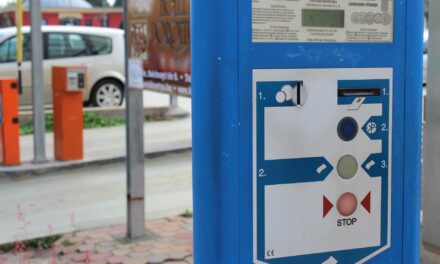Based on its pipeline connections, Hungary can already import natural gas through six neighboring countries.
It is only apparently reassuring that, since Hungary has not been importing natural gas of Russian origin through Ukraine for some time, it will not cause confusion if gas transit through Ukraine stops next year.
The fact that the amount of Russian oil previously ordered by Mol is still arriving in the country is not all right. All this is just the surface.
Hungary is heavily exposed to hydrocarbons of Russian origin, and for historical reasons, a major part of its energy supply is based on this. Its dependence was cemented by the fact that the transport pipelines entered the country exclusively at the Hungarian-Ukrainian (previously the Hungarian-Soviet) border with oil and gas bought at a favorable price, and there was no import pipeline in the other direction for decades. However, the situation has changed significantly in recent years.
The quantity included in the effective long-term Hungarian-Russian gas purchase contract is enough to supply the basic domestic needs, i.e. the population. According to the 2021 agreement, 4.5 billion cubic meters will arrive annually, of which 3.5 billion cubic meters will come from the south, via Serbia, and one billion cubic meters from Austria.
In practice, Gazprom already sends the latter lot across the Serbian-Hungarian border.
In addition to the 4.5 billion cubic meters per year, Minister of Foreign Affairs and Trade Péter Szijjártó later agreed on additional, smaller items, but all of this is little compared to the otherwise decreasing gas demand of 8 billion cubic meters per year. In the 2024/2025 gas year, domestic production contributes to the satisfaction of domestic demand by around 1.7 billion cubic meters per year, according to the estimate of FGSZ Zrt., that is, the difference again comes from imports.
Based on its pipeline connections, Hungary can already import natural gas through six neighboring countries, FGSZ has not only connected its own gas network to the Slovenian gas network.
From Romania, after the planned expansion of cross-border capacities, increasingly large items are expected. The source is the Romanian production, which is about to ramp up, and the natural gas sent to the Romanian network via Bulgaria, mainly from the countries to the east of Bulgaria.
On this route, Hungary receives 1-2 billion cubic meters of natural gas per year based on the agreement reached last year.
In addition, the Hungarian state-owned MVM recently closed the deal with which it bought a stake in the huge Shah Deniz gas field in Azerbaijan.
Liquefied gas (LNG) tankers from almost anywhere in the world can run to the floating LNG terminal on the Croatian island of Krk, from which the route is straight through the pipeline to the Száhahalombatta refinery. The capacity of the floating terminal is smaller than that of the facility originally planned for land, but since its expansion is on the agenda, Hungarian imports from this direction may also increase over time.
Now and in the last 1-2 years, Hungary has access to natural gas of Russian and non-Russian origin through the three countries listed. It does not import from Ukraine, and interestingly (for market reasons) it does not import from Austria either on the HAG pipeline, which is a symbol of moving away from Russian gas.
In 1996, Hungary ended its dependence on imports via Ukraine by laying the HAG pipeline connecting the Hungarian-Austrian gas system. In principle. In fact, from then on, Russian gas arrived from Austria as well - via the Slovakian branch of the Brotherhood pipeline - because the gas that could be bought from the West was much more expensive.
HAG is currently the route of Russian gas through Ukraine and Slovakia. Alternative gas is promised after the expansion of the TAG (Trans Austria Gas) pipeline.
Hungary could also buy natural gas from the north via the Hungarian-Slovak interconnector, but this is not a reality now. Russian gas could have been brought in from this direction as well (but more expensive due to the bypass) until the Yamal pipeline crossing Poland was shut down, and until problems appeared on the Nord Stream. Here too, we can get gas from an alternative source if gas from any part of the world market is filled into the pipe at the LNG terminal in Western Europe or Poland.
There is also a strong American interest in favor of this solution - since the USA has a lot of gas for sale - but from the Hungarian point of view, it is still beneficial to purchase the cheaper, pipelined Russian gas.
Based on the above, it is obvious that Hungary has many alternative gas procurement options, but these sources are more expensive than the Russian ones, their access sometimes requires new investments, it would be a mistake to describe the Ukrainian route in the long term.
Since the shortest and already established gas route from Russia to Hungary passes through Ukraine, it is obvious in the long term to import it through our eastern neighbor. This possibility should not be brushed off the table, even if the situation is very different now:
Ukraine has indicated that from 2025, not a single molecule of Russian gas will continue to the West.
The fact that the Russian gas imported via the Turkish Stream, then through the Balkans, takes a much longer route, and geopolitical risks cannot be ruled out later on, can speak in favor of the later restoration of the Ukrainian transit. In addition, Russian gas imported not only according to the long-term gas contract, but also imported on a market basis, arrived in Hungary through Ukraine.
An important common characteristic of alternative gases is that their origin is not precisely known to the public. Sometimes we know the names of the sending countries, pipelines and LNG terminals, but the seller is not necessarily the same as the gas producer.
The relationship between them is not always disclosed for business reasons, especially not during a period of sanctions when suspicions of violation of the sanctions may arise. Like now, for example. However, this is mainly relevant in the oil market.
It is hoped that Lukoil's oil, which was ordered by Mol, but which Ukraine has not allowed since July, will arrive in Hungary again soon. Negotiations in this regard are ongoing. Although Lukoil's deliveries are replaced by two other Russian oil companies, the current situation obviously cannot be maintained in the long term, because
Ukraine can force Mol to enter into an agreement with the other two Russian sellers, which will allow the Hungarian company to receive a higher transit fee than it has received from Lukoil.
Although Ukraine has announced that it will fulfill its oil transit commitments until 2029, it is not known what will happen after that. Russian oil comes through a war zone, which poses a risk. The European Union expects Hungary to completely wean itself off Russian oil by 2027.
Finally, due to the avoidance of risks, it is also in Hungary's interest to diversify its oil procurement, to share its import dependence between several suppliers.
However, this change is not only a commercial decision. The Dunai Finomító (Dufi) in Száhahalombatta must also be made suitable for the processing of oils with a composition different from the Russian one. About 35 percent of this has already happened, the alternative oil arrives via the Adriatic pipeline in Croatia. It is true that Adria's operator, Janaf, has indicated that even the entire Hungarian and Slovakian refinery needs can be transmitted through the pipeline, but this option will not be of much use until the two refineries are able to process exclusively non-Russian oil.
Not much is said publicly about where Mol gets its non-Russian oil.
In this regard, however, it says a lot that, for him, the price of Russian Ural oil delivered to India is authoritative. This announcement was made at an analyst meeting after the company's second quarter flash report, according to the report of Tamás Pletser, Erste's leading oil and gas industry analyst. We can add that India is obviously active in the oil market not as a producer, but as a trader. It is also known that 630 thousand tons of crude oil arrived in Hungary from Kazakhstan last year, this was announced by Péter Szijjártó in November 2023. It is also said that Arab oil is acquired by Mol.
Also on the analyst call, Mol was said to be ready to supply both of its large inland refineries from the sea by the end of 2026.
He will pay the 500 million dollars required for this out of his own pocket. Russian oil has become politically risky, but due to the war situation, it is also risky in terms of physical access.
It may attract the attention of the shareholders that when Mol pays for the conversion of the refineries out of its own pocket, and buys oil and gas that is different from Russian, and at the same time more expensive, it all worsens the economics of its operation.
Cover image: Workers check the pipeline system at the Vecsés plant of FGSZ Földgázsválló Zrt.
Source: MTI/Szilárd Koszticsák













